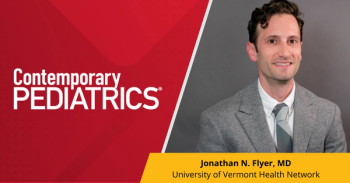
Easy ways to improve health care sustainability in your practice
Shreya Doshi, MBBS, FAAP, joined us to discuss some easy opportunities to reduce emissions in your practice and help improve health care sustainability.
In this Contemporary Pediatrics video interview, Shreya Doshi, MBBS, FAAP, a board-certified pediatrician and an infectious disease fellow at Children’s National Hospital in Washington DC, explained how providers can implement changes to reduce emissions and better serve the environment in an effort to improve health care sustainability.
In a
Doshi explained different types of emissions, noting scope 3 emissions, have the biggest impact when it comes to health care-associated emissions.
“I think the first step is to understand what emissions are and how we can categorize them and measure them,” Doshi said. “There are 3 categories. There’s scope 1 emissions, [which are]direct emissions from health care such as on-site boilers [or] anesthetic gasses. Scope 2 emissions are indirect emissions from purchased energy. Hospitals need energy to run and are one of the most energy-intensive and energy-requiring [buildings] because they need to operate 24-7. Scope 3 emissions are emissions from all other sources. That includes purchased goods, employee commenting, waste management. [These emissions] are by far the highest percentage of health care-associated emissions, and the biggest single category within that, is from pharmaceuticals, chemicals, and medical supplies.”
Doshi referred to the Providence Health System nemonic “We Act,” which stands for2:
W- Waste
E - Energy and Water
A - Agricultural/Food Cycle and Anesthetic Gas
C - Chemicals and Pharmaceuticals
T - Transportator
In the video above, Doshi discussed each topic and offered easy solutions that can be incorporated in day-to-day practice.
References:
- Fitch, J. Discussing health care sustainability, climate change, and WHO's One Health goal. Contemporary Pediatrics. June 26, 2024. Accessed July 11, 2024. https://www.contemporarypediatrics.com/view/discussing-health-care-sustainability-climate-change-and-who-s-one-health-goal
- Environmental Stewardship at Providence: WE ACT 2022 Year in Review. Providence.org. Accessed July 11, 2024. https://blog.providence.org/blog/environmental-stewardship-at-providence-we-act-2022-year-in-review
Newsletter
Access practical, evidence-based guidance to support better care for our youngest patients. Join our email list for the latest clinical updates.









